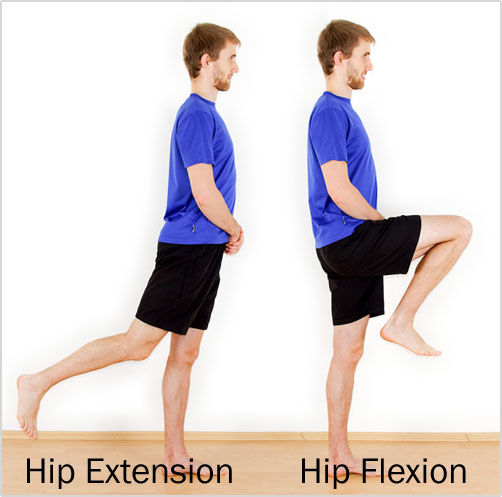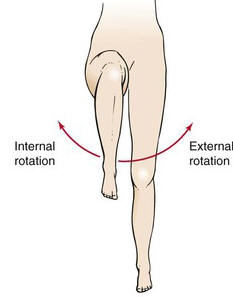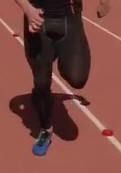
Hip

Flexion is
the bending of a part, or decreasing the angle between two parts. You flex your
hip when you bring your thigh up. Range of motion:
130° (80-90 for 2-joints).
Extension is the opposite of flexion,
describing a straightening movement that increases the angle between body parts.
You extend your hip when the thigh is moving down or backward.
Range
of motion: -10° (10° for 2-joints).

Abduction is the movement that moves the limb away from the
midline or median of the body. Hip abduction will result in the knee be
lifted up sideways.
Adduction
means to move closer to the median plane of the body.
Hip adduction will lower the knee or lift on the opposite side sideways.

Internal Rotation is the movement of the hip that rotates it
inward.
External Rotation
is the movement of the hip that rotates it outward.


Mobility tests: Hip
Strength tests
: HipP
osture Evaluation: Look for bad alignment in all planes. Foot pointing externally might results from weak internal rotators.
Inline Lunge:
weakness of the hip abductors or
adductors will destabilize the knee. Lack of strenght will make getting up
difficult.
Active Straight Leg Raise:
demonstrate the mobility of the hip extensors.
Running with Low Knee
Most of the time, running low, with a small angle of the knee (should be around
150°) is not cause by a limited range of motion of the knee extension but it can
be caused by a weakness of the hip flexors.
